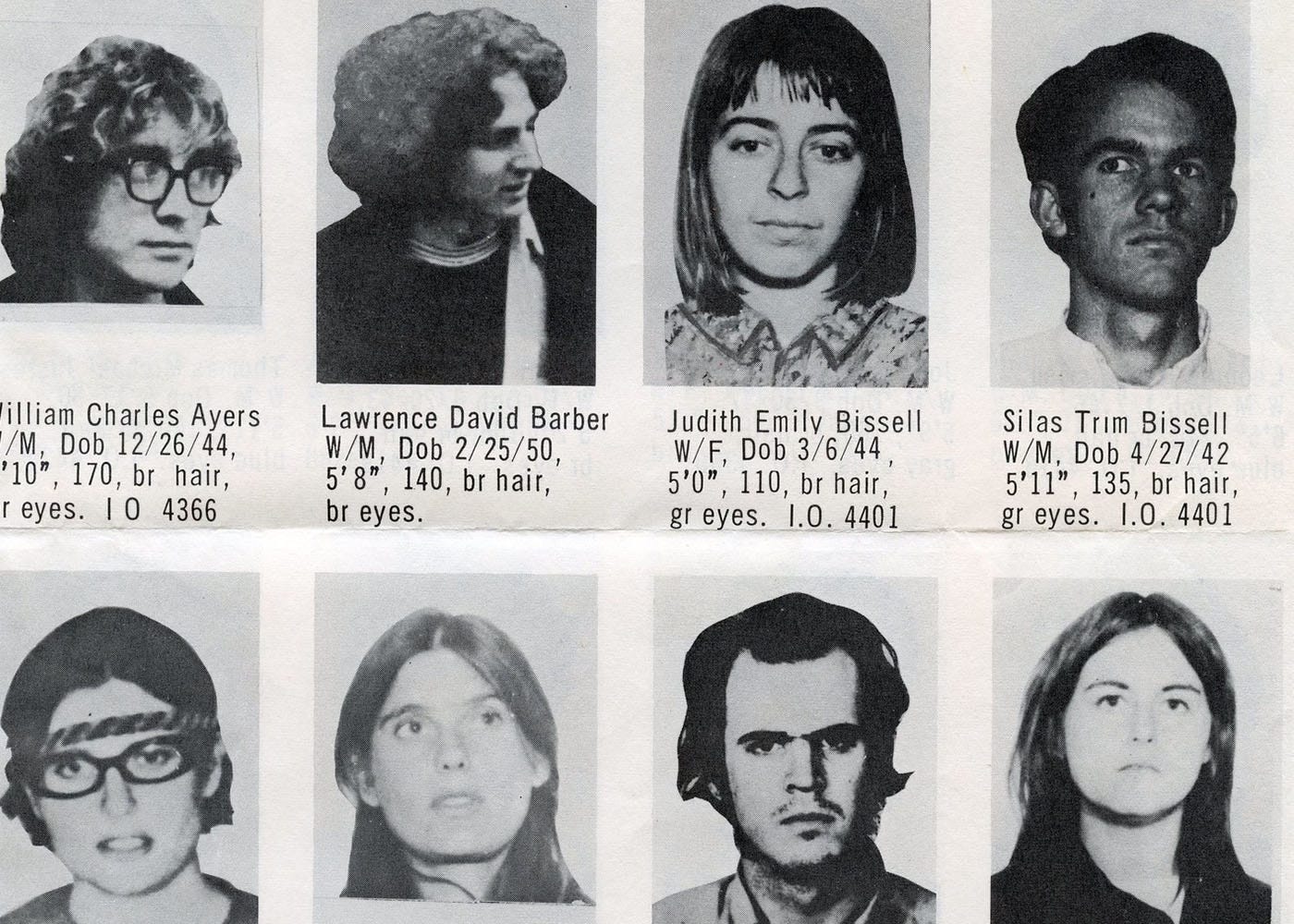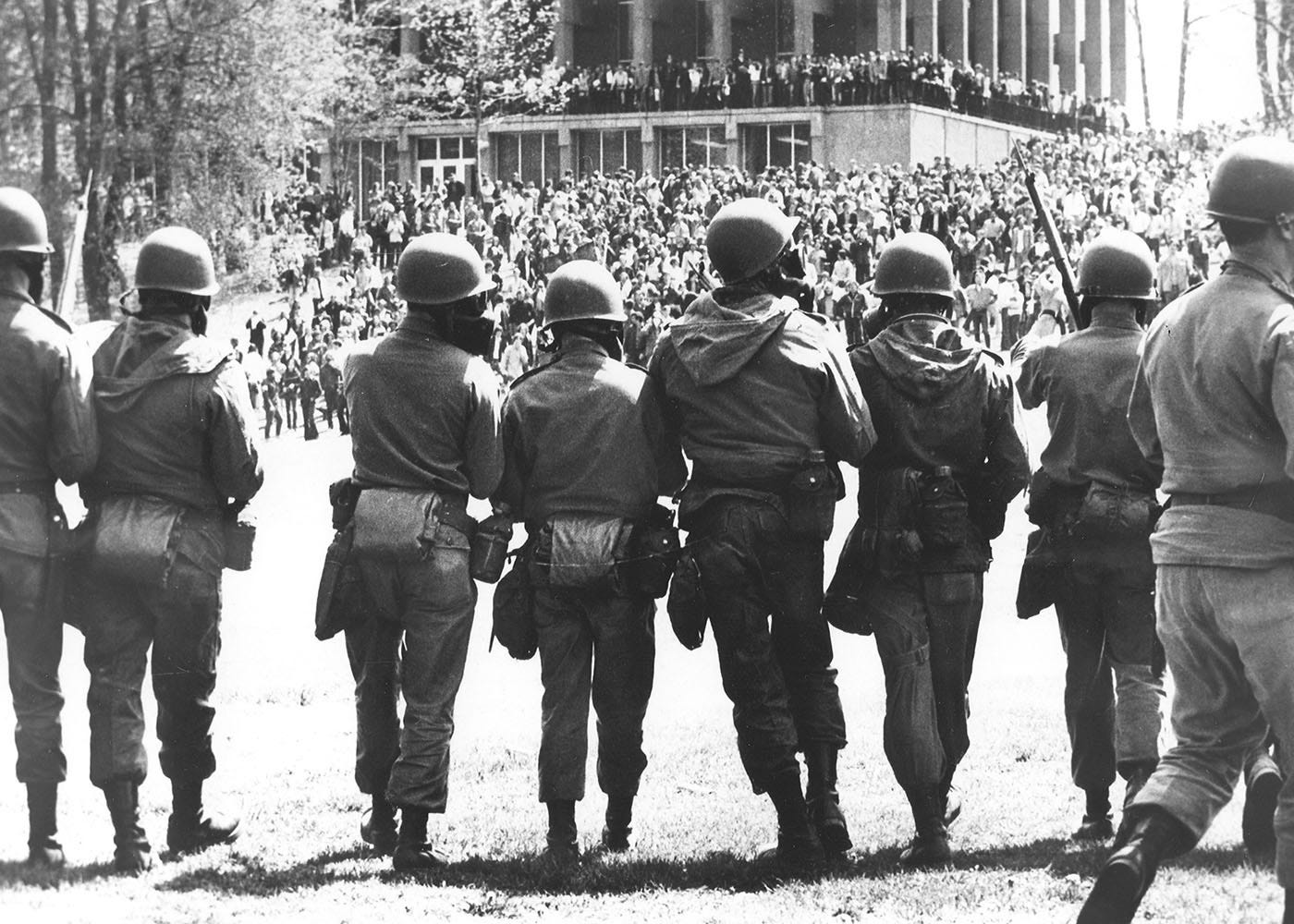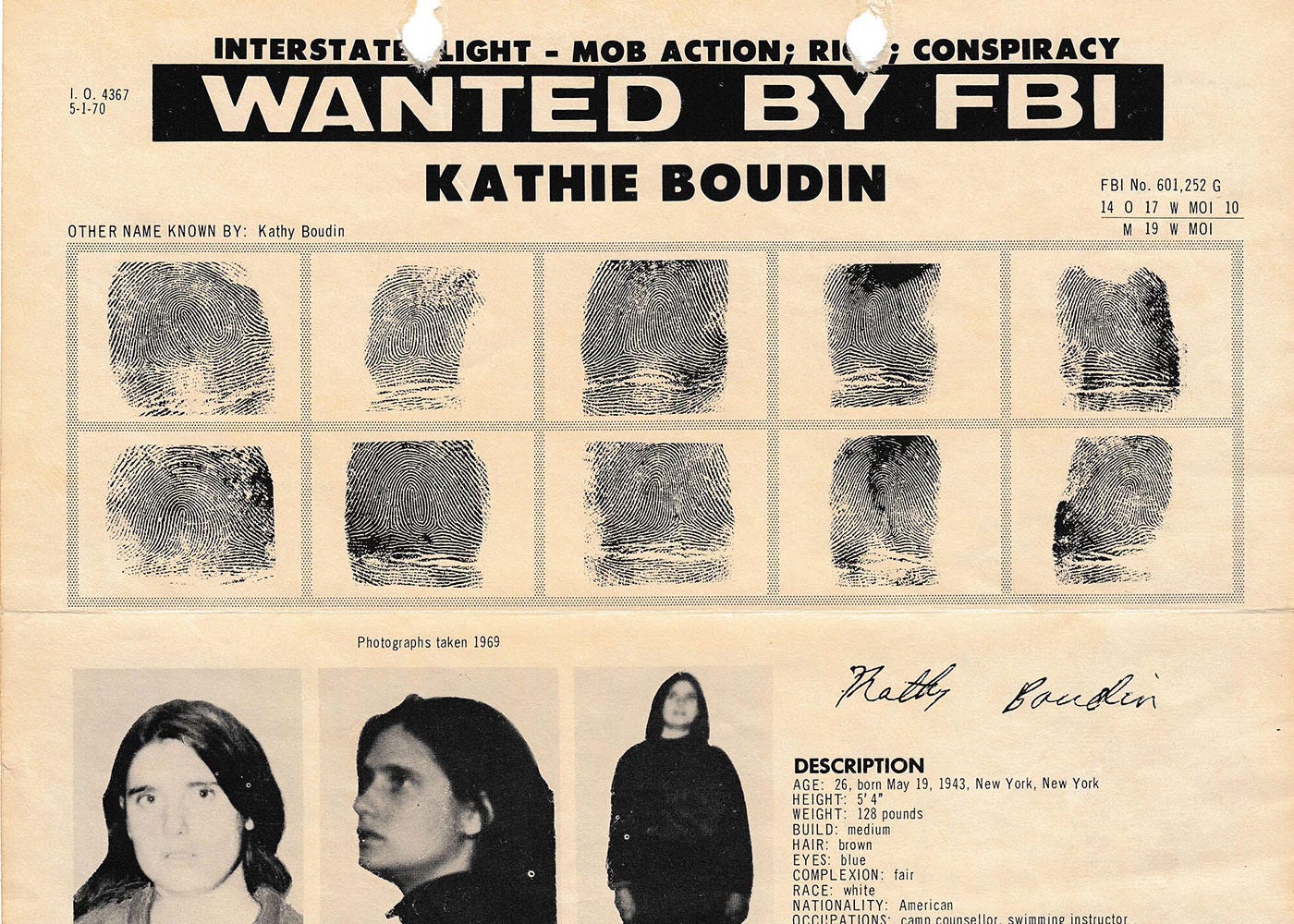Lessons From The Counterculture Part 8/9: “The Personal is Political”
Identity politics, & how the Left devoured itself
Note: this series is intended to be read in sequence, and this part makes references to personalties and concepts developed in the preceding parts.
“We were eaten for breakfast by our own. When we in the movement realized that we weren’t going to dismantle the system, we turned our hostility towards each other. In 1969 the movement began to amass real power, and we began to criticise each other, more effectively than the repressive society ever did”. – Jerry Rubin
I’m sitting in Rolling Stone writer Anthony DeCurtis’s bright, tranquil office on New York’s Upper West Side, Anthony is at his desk, talking to me from behind a stack of books. He speaks slowly, wistfully, sadly, more to himself than to me. It’s awkward because I’m on a low chair clearly designed for lounging, quietly struggling against its demand that I recline as Anthony becomes increasingly emotional.
We discuss the slow dissolution of the Counterculture post-’68: the brutal protests and confrontations that expanded across 1969; the flight from Haight-Ashbury, when many of the early hippie spiritualists, appalled by the levels of violence, withdrew to rural California, or into New Age cults; the savage murders committed by a troupe of L.A. hippies led by Charles Manson; the euphoria of Woodstock, which dissolved into shock and fear at the Altamont Free Concert less than three months later, when the Hell’s Angels rampaged through the crowd, beating musicians and spectators with pool cues, and stabbing a teenager to death while Mick Jagger gyrated on stage under a baleful, forbidding moon.
Mike Wilhelm, musician, The Charlatans: “Hey, y’know, it ain’t all peace and love, some people aren’t interested in that”.
The violence and state repression only intensified as the decade turned, culminating in the dread spectacle of America murdering its own children when the National Guard opened fire on demonstrating students at Kent State University. Anthony says that the Counterculture was soon overcome by regretful introspection, “Did we do this? Did the assassinations and the violence and all of the problems contribute to that in some way? Through our passivity, through our indifference, through our little trippy frolicking while all these serious things were going on? Did we allow that to happen? Are we morally culpable? I think all those questions were being asked.”
The Counterculture was not to blame for Lyndon Johnson, nor Chicago or Nixon or the escalation of the war and the state violence directed at the marches and sit-ins; it’s important to assign responsibility where it properly belongs: in this case with the establishment, with the Right, and with a Democratic Party incapable of engaging with the new, youthful voice of the democratic Left. But the Left did not advance its cause as successfully as it could have, there were serious deficiencies within the broad Counterculture that prevented a truly effective political force, one capable of forming a national executive, from emerging.
In the aftermath of Chicago a diminished New Left turned on itself. Students for a Democratic Society became fractious and less interested in democracy, a new generation delivered under the tear gas and beatings at Columbia University assumed the leadership, disdained their predecessors, judged the march on Chicago to have been ill-conceived and the reformist programme of the ‘60s a weak embarrassment that sold out the revolution. Meetings typically descended into acrimony.
Tom Hayden, Rebel:
“Rennie [Davis] and I were becoming seen as old guard, or perhaps older sibling rivals of the new leadership, who classified us as politically “reformist”, if not already “bourgeois”. It is true that we were not comfortable with the development of abstract rhetoric and fierce factionalism in the organization, which had once been like a family….I will never forget one particularly arrogant SDS national secretary, Michael Klonsky, the brash and unreconstructed son of a doctrinaire Marxist condemning Rennie and me for being “New Left”, by which he meant the entire period 1960-68 had been a wasted, middle-class detour for the SDS…Klonsky subsequently formed something called the Communist Party (Marxist-Leninist), which sang the praises and organized tours of Khmer Rouge Cambodia”.
The New Left soon fell in step with Leftist movements across Europe and plunged into the impotent solipsism of identity politics. As Christopher Hitchens recorded, “People began to stand up at meetings and orate about how they 'felt', not about what or how they thought, and about who they were rather than what (if anything) they had done or stood for. It became the replication in even less interesting form of the narcissism of the small difference, because each identity group begat its sub-groups and ‘specificities.’”
The Left became obsessive over questions of race, not in the direct, political terms of the Civil Rights Movement, but in ill-defined and abstract concepts of identity and “imperialism”. The SDS began to talk about “Black Liberation movements”, “oppressed colonies” in the United States and a “white fighting force”, appropriating the language of segregation. This obsession expanded to include class and gender, with ideas, proposals and people pushed into Mark Fisher’s “Identi-camps”. A nascent form of the hierarchies of victimhood was erected, the language became ever more blunt and confrontational, with complex questions reduced to trite slogans and re-hashed Marxist dogma. A banal revolutionary lexicon appeared, accompanied by rediscovered Bolshevik iconography in pamphlets and posters. This was the distorted Yippiefication of the remainder of Left, revolution as spectacle, “you are the show”. Only now it would be deadly.
In 1969 the splits became so numerous that SDS finally shattered. From its ruins the “Weathermen” emerged, a terrorist group, the final legacy of the hopeful organisation that had published the Port Huron Statement.
Tom Hayden, Rebel:
“The Weathermen knew that it was not possible to build a progressive America…it was past time to ‘realign’ the Democratic Party, it was time to smash it. They scoffed at those who spoke of ‘long-term organizing’ or ‘building stable families and lives’. It was time for ‘Vandals and Visigoths’, the loveless barbarians who undermined the Roman Empire’”.
The Weathermen’s first bomb exploded in the fall of 1969. Their campaign of bombings, arson and robbery over the course of the 1970s contributed to the complete deligitamisation of the Left within the public mind, a process replicated by the Red Army Faction and Red Brigades in Europe. The future now belonged to the radical Right.
The most damaging charge that can be levelled against the Counterculture is that in its quest to transform society it failed to carry society with it. The spectacle, the sense of chaos, the incomprehensible language, the perceived hostility (labelling everyone in America as “racist”) and above all the inability to reach into the reality of people’s lives and articulate a coherent vision for a future nation changed, ultimately alienated too many people.
It is insufficiently understood by the Left that the very people in whose interests it claims to act instinctively feel that it is they, and not the establishment classes, that have most to lose from political instability. The working-class, those on the breadline, the “Just About Managing”, as they are defined in our current politics, if you feel yourself helplessly balanced on the precipice, the last thing that you want to experience is a gale. And when the Weathermen’s violence came, it drove America directly into the arms of the Right.
Sanford D. Horwitt’s biography Let Them Call Me Rebel: Saul Alinsky, His Life and Legacy, quotes the veteran Chicago Leftist in his condemnation of the Weathermen:
“Any serious radical organization would have executed the Weathermen as a matter of course. The worst form of social treason is to stir up a reaction that is more damaging to you than your enemy. The Weathermen should be getting paid by the extreme right for the work they do”.
Tom Hayden, Rebel:
“At the last Weathermen meeting before they went underground, Bernadine [Dohrn] stood on the stage in a miniskirt and high leather boots, raising her hand in the air, her finger making the sign of Manson’s fork (used to disembowel Tate), a symbol of the brutality that the Weathermen had decided to inflict on ‘bourgeois society’. The Weathermen had concluded that white babies were ‘pigs’…The face of evil -of Fascism- had appeared in the youth culture. What had started with love and peace, pushed too far, seemed dialectically to become its opposite”.
The repugnant spectacle of praising violence and murder, for political reasons, as the Weathermen leader Bernadine Dohrn did when she celebrated the Manson Family’s act of murdering and disembowelling the pregnant Sharon Tate with a fork, is, unforgivably, alive and well on parts of our modern Left.
For politics grounded in a sense of ethics, and justice, the same impulses that would lead you to oppose Israel’s racist land grab and violent subjugation of the Palestinian people, should also lead you to oppose the terrorist murder of Israeli civilians; the two positions share the same moral objection. Yet Hamas’s massacre of Israeli civilians on the 7th of October 2023, in which parents were executed in front of their bound children, children were killed while they screamed for their parents and a baby was shot while in the arms of her mother, was openly celebrated by sections of the Left.
Long before Israel embarked on its latest, genocidal campaign of mass murder in Gaza, a professor of history at Cornell University addressed a crowd of students and described Hamas’s massacre as “exhilarating” and “energising”. Another speaker glorified it as “slaves taking over the plantation”, a group named Students for Justice in Palestine called it "a historic win for the Palestinian resistance". This is just one instance of where the positions of the Left have “dialectically become [their] opposite” – the moralising and piety identified in Mark Fisher’s Vampire Castle has devolved into a defence of some of the worst immoralities that the human mind can conjure. Our identitarian Left is riven with these types of dialectical contradictions, just as the ‘60s Counterculture was before it.
After the Weathermen disappeared underground to become violent terrorists and assets of the Right, with no prospect of helping to change America for the better, many of the other prominent Counterculturalists abandoned Socialism, materialist class analysis, any attempt to address society as a whole, and simply wandered off towards solipsistic prisons.
Rennie Davis, who had given a biting denunciation of the primacy of private property during the trial in Chicago, became a venture capitalist and New Age spiritualist, as did Jerry Rubin and a raft of former Hippies and New Left activists. Eldridge Cleaver, one of the leaders of the Black Panthers and a wife-beating rapist who had written the introduction to Rubin’s Do It! Scenarios of the Revolution, became a conservative Republican and vocal advocate for Ronald Reagan, having also stumbled through various religious groups and spiritualist aggregations.
Rubin later appeared in a series of debates with Abbie Hoffman (who did retain his politics) entitled Yippie vs Yuppie, “The strategy of this generation is to transform America through entrepreneurial Capitalism”, Rubin pronounced from the stage, “we’ve learned that the alternative to Capitalism doesn’t allow much freedom and we’re in the process of transforming Capitalism from big business to entrepreneurship”.
Although these departures to the Right might appear to be resignation borne of defeat, or else a time-honoured feature of the exodus from youth to middle-age, I think they are consistent with the ideology of the Counterculture, latent within it from the beginning. The Libertarianism and narcissism that were at work in Ken Kesey’s Pranksters, and expressed themselves within the Hippie movement, the defence of inclination as authenticity in One Flew Over The Cuckoo’s Nest and its politics of “being true to oneself”, the same politics that led to fellowship with the Hell’s Angels, all of this is congruent with the free-market Libertarianism of the Neoliberal Right.
Jerry Rubin’s book Growing (Up) at 37 is not simply a disavowal of his (supposed) revolutionary Socialism, it’s a long depressing descent into subjectivity, a confession that all his former ideas and acts were simply sublimated neuroses, meaningless vignettes in his repetitive failure to “find himself” and adequately express his sense of identity.
In a passage about his girlfriend he writes:
“My relationship with Rhoda and my experience in therapy helped me accept, love and develop the female side of me. With Rhoda I became conscious of my yin-double, the woman-inside-of-me. I was chasing her, never catching her. And of course, through it all I knew who Rhoda was. Rhoda was me. Rhoda was the me-inside-me that I had created to prove myself to me”.
This is how Jerry Rubin thought about and related to another subject, another person. The final chapter of the book is entitled “Uniting the personal and political”, as Christopher Hitchens said, “a truly bad idea had entered the discourse”.
That religion and spiritualism featured so heavily not just on the religious side of the Counterculture, but in the later lives of many of those on the radical and Marxist Left, is also revealing. The neurotic introspection, abetted by psychedelic drugs, that preoccupied so much of the Counterculture led to a break with materialism that not only chimed with the general prospectus offered by religion, but in its urge to “destroy the political bonds that shackle and diminish us”, also discovered the self-interested justifications of the political Right, which religion has traditionally worked to support.
In his seminal poem A Communist to Others W.H. Auden wrote of:
A host of columbines and pathics
Who show the poor by mathematics
In their defence
That wealth and poverty are merely
Mental pictures, so that clearly
Every tramp’s a landlord really
In mind-events.
As the poem points out, spiritualist negation of materialism is a useful tool of the Right in its defence of wealth, and I’m certain that the Rennie Davis’s of the world implicitly relied on it during their self-reinvention as venture capitalists. In our present culture war this phenomenon has been let loose on the Left, where it flails around and spreads confusion.
The contentious discourse around racial and gender identities, in particular, is a collapsing galaxy of contradictions, in which gender is posited as a subjective sensation unrelated to biological sex, with categories that elude a stable definition, and racial oppression is often talked about as having a metaphysical quality, spanning generations and transcending immediate material conditions. It’s notable that the justifications for these positions are inconsistent and often conflict, for example in the proposition that it’s possible for an individual to transition between genders, or sexes, but not races. These arguments have been litigated online and in books and papers, without, to my mind, ever achieving a coherent resolution.
These are the spiritual traps of Mark Fisher’s identi-camps, fetishistic and representational identity politics of meme and spectacle, in which material reality is supplanted by the imaginative realm, Auden’s “mental pictures”. As Fisher points out in Exiting The Vampire Castle, one of the logical consequences of these politics is that “[the Left] seems to think that working class people should remain in poverty, obscurity and impotence lest they lose their ‘authenticity’”.
Liberal criticism of identity politics has tended to focus on the latter’s emphasis on the interests of the group, rather than Liberalism’s defence of the individual, but I think that this interpretation misses the point. What we are seeing in the identity-driven culture wars are groups that do not resemble material classes, but rather immaterial subcultures, individuals who align based on subjective, quasi-spiritual postures, an updated example of the “communal-individualism” that arose in the 1960s.
What Christopher Hitchens called “the replication in even less interesting form of the narcissism of the small difference, because each identity group begat its sub-groups and ‘specificities’”, is precisely the atomic reaction burning through the contemporary Left, with its neurotic fixation on “intersectionality” and “positionality”. There are limitless configurations of specificities, such that all meaningful class analysis dissolves and every member of the group presents themselves as anomalous within the group.
This is how individual desire expresses itself through identity politics, where it meets individualism and, in turn, Libertarianism. There is no contradiction between Jerry Rubin the Marxist revolutionary and Jerry Rubin the Libertarian capitalist, both were simply postures that satisfied Rubin’s libidinal desires at different points in time; it was no accident that the 60s counterculture ended the way it did.
In Rebel, Tom Hayden recalls an encounter at the turn of the 1970s with Terry Robbins, one of the leaders of the Weathermen. Hayden’s vision for a racially diverse, class-conscious movement that sought to work through America’s democratic institutions seemed over, and his remarks to Robbins serve as both a summary of his defeat and a warning for our future:
“As I said in a bitter argument with Terry, they were not the conscience of a generation, but its id, finally surfacing”.
Next — Lessons From The Counterculture Part 9: Escape from The Vampire Castle. Liberty vs Libertarianism & The Hydras of the Culture Wars
Reading:
Tom Hayden, Rebel. A Personal History of the 1960s [2003]
Jerry Rubin, Growing (Up) at 37 [1976]






